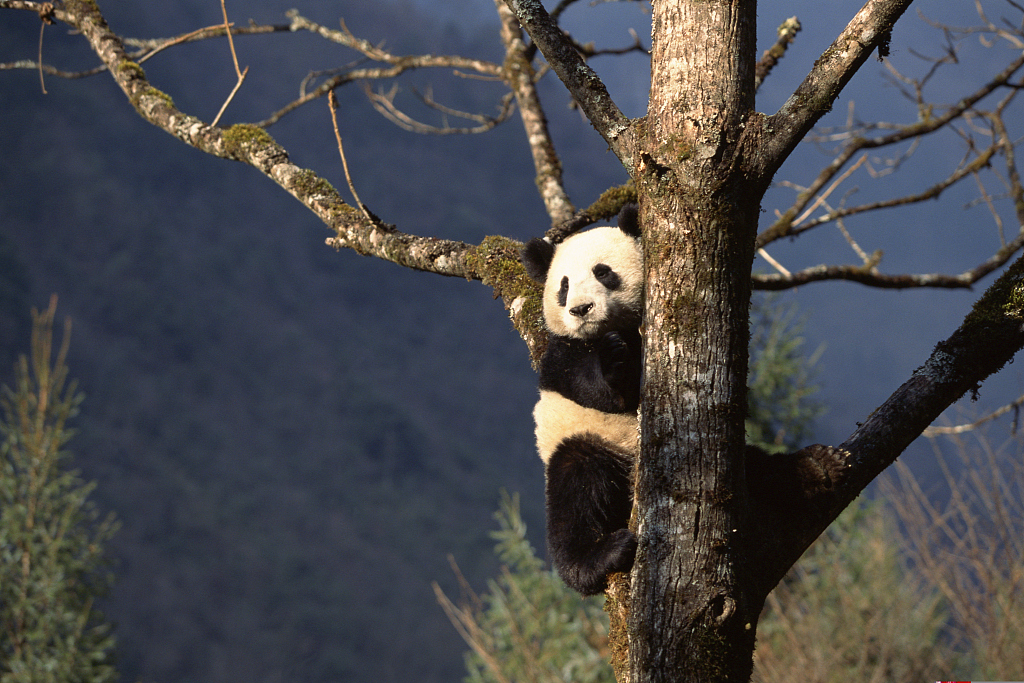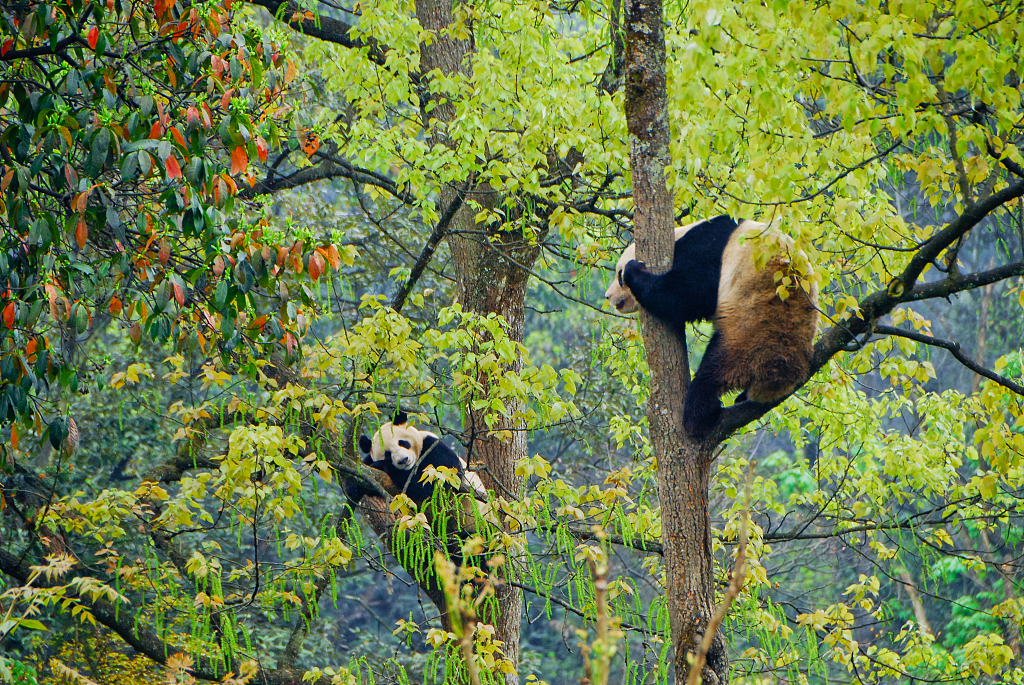00:41

Three young giant pandas are being trained for life in the wild by the China Conservation and Research Center for Giant Pandas in southwest China's Sichuan Province.
According to latest data from the China Conservation and Research Center for Giant Pandas, the population of giant pandas at the center has exceeded 310, making it the largest captive giant panda population in the world. The center is currently preparing for the next batch of pandas to be returned to the wild.

Panda in Sichuan Province, southwest China. /VCG Photo
Panda in Sichuan Province, southwest China. /VCG Photo
"We are training three young giant pandas to prepare them for the next step of wild release plan, one male, two females. All of them are currently in good health," said Wu Daifu, director of the center's semi-wild training base.

Pandas need to be trained before they are released into the wild. /VCG Photo
Pandas need to be trained before they are released into the wild. /VCG Photo
Male giant panda Xiang Xiang was released into the wild after training in 2006, but he couldn't survive life with wild pandas and eventually died.
Learning from the tragedy, the center has adopted a new way of training, where panda cubs live with their mom in half-wild environments. In addition, researchers have placed captive female giant pandas in the wild, so that they mate with wild male pandas, and bring new bloodline to the captive giant panda population.

Panda cub with its mother. /VCG Photo
Panda cub with its mother. /VCG Photo
"There is basically no precedent for doing this project. The purpose of doing this wild panda introduction project is to improve the genetic diversity and population viability of captive giant pandas," Wu said.

Pandas are drinking water. /VCG Photo
Pandas are drinking water. /VCG Photo
As the world's largest research institute for giant panda conservation, the China Conservation and Research Center for Giant Panda also provides strong technical support for the construction of the Giant Panda National Park. The National Park takes up an area of over 27,400 square kilometers, covering three provinces, 67 giant panda nature reserves in China.

Pandas in the nature reserve of Sichuan Province. /VCG Photo
Pandas in the nature reserve of Sichuan Province. /VCG Photo
"We have also begun to study animals that live in association with pandas, such as golden monkeys, takins, Chinese monal pheasants, red pandas. We do research on these wild animals to support the construction and research in National Park," said Zhang Hemin, deputy head of China Conservation and Research Center for Giant Pandas.
As of December 2018, 11 giant pandas had been released into the wild by the China Conservation and Research Center for Giant Pandas, of which nine survived in the wild.
(Cover image via VCG.)
(If you want to contribute and have specific expertise, please contact us at nature@cgtn.com)